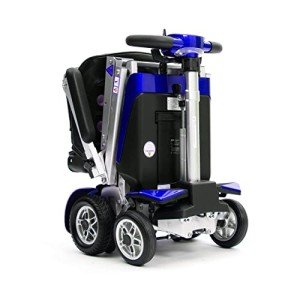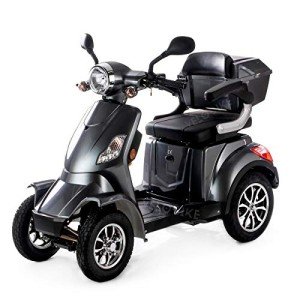This company has no active jobs
0 Review
Rate This Company ( No reviews yet )
About Us
The 12 Worst Types Mobility Scooters Users You Follow On Twitter
Electric Mobility Scooters UK: A Comprehensive Guide
Electric mobility scooters have quickly become an important part of modern transportation, particularly in the United Kingdom. These devices use a convenient, environment-friendly, and affordable option for people with mobility issues, allowing them to keep their independence and navigate their daily lives with greater ease. This article offers a comprehensive overview of electric mobility scooters in the UK, including their advantages, types, legal factors to consider, and pointers for picking the best design.
Introduction to Electric Mobility Scooters
Electric mobility scooters are motorized lorries developed to help individuals with strolling difficulties or other mobility disabilities. They come in different sizes and designs, from compact models for indoor usage to robust, all-terrain scooters for outside activities. These scooters are powered by rechargeable batteries and can reach speeds of as much as 8 miles per hour, depending on the design.
Benefits of Electric Mobility Scooters
- Improved Independence
- Mobility scooters allow users to take a trip longer distances without tiredness, decreasing the requirement for help from others.
- Affordable
- Compared to other types of transportation, electric scooters are fairly inexpensive to buy and maintain.
- Eco-Friendly
- Electric mobility scooters produce no emissions, making them an eco-friendly option.
- Enhanced Accessibility
- These scooters can be utilized in numerous settings, from grocery stores and shopping centers to parks and leisure locations, increasing ease of access.
- Social Inclusion
- By supplying a means of transportation, mobility scooters assist users remain socially linked and taken part in community activities.
Kinds Of Electric Mobility Scooters
-
Class 2 (Electric Wheelchairs)
- Designed for usage on pavements and paths.
- Maximum speed: 4 miles per hour.
- Appropriate for indoor and outdoor use.
-
Class 3 (Electric Mobility Scooters)
- Can be utilized on roadways, pavements, and footpaths.
- Optimum speed on roads: 8 miles per hour.
- Maximum speed on pavements: 4 mph.
- Ideal for longer journeys and outside use.
-
Collapsible Scooters
- Compact and light-weight, created for easy storage and transport.
- Appropriate for users who frequently travel or have limited storage area.
-
All-Terrain Scooters
- Constructed to deal with rough surface and off-road conditions.
- Often have larger wheels and more effective motors.
- Perfect for users who delight in outside activities like treking or gardening.
-
Durable Scooters
- Created to support users with higher weight capabilities.
- Sturdy building and construction and enhanced toughness.
- Suitable for individuals who require a more robust and reputable alternative.
Legal Considerations in the UK
-
Licensing and Insurance
- No driving license or insurance is required for Class 2 and Class 3 mobility scooters.
- However, users need to be at least 14 years old to ride a Class 3 scooter on the roadway.
-
Roadway Rules
- Class 3 scooters should have a red and amber light system and a rear reflector to be used on the roadway.
- Users need to follow road rules and be mindful of their environments.
- Pavement use is limited to 4 mph for both Class 2 and Class 3 scooters.
-
Disability Allowance
- Some users may be eligible for a mobility allowance through the UK government, which can help cover the expense of a scooter.
- The Motability Scheme is a government-funded program that offers monetary help for buying mobility aids.
Tips for Choosing the Right Electric Mobility Scooter
-
Examine Your Needs
- Identify where and how you will mostly use the scooter (inside your home, outdoors, both).
- Think about the distance you need to travel and the surface you will come across.
-
Test Ride
- Check out a local mobility shop to evaluate ride different designs.
- Guarantee the scooter is comfortable and easy to run.
-
Battery Life
- Choose a scooter with a battery life that suits your everyday requirements.
- Consider the charging time and the schedule of backup batteries.
-
Weight Capacity
- Check the weight capability of the scooter to ensure it can support your needs.
- Durable models are offered for users with higher weight requirements.
-
Features and Accessories
- Look for functions like adjustable seats, tilt systems, and easy-to-read control board.
- Think about devices such as baskets, seat belts, and weather protection.
Upkeep and Safety
-
Regular Check-Ups
- Schedule regular maintenance checks to make sure the scooter remains in excellent working condition.
- Replace worn parts and recharge the battery frequently.
-
Safety Gear
- Always use proper security equipment, such as a helmet and reflective clothes.
- Use lights and reflectors when riding in low-light conditions.
-
Road Etiquette
- Be polite to pedestrians and other road users.
- Follow designated courses and avoid congested locations.
-
Storage and Security
- Store the scooter in a dry, secure place to prevent damage and theft.
- Think about using a locking mechanism or GPS tracker for added security.
Regularly Asked Questions (FAQs)
Q: Do I require a driving license to use an electric mobility scooter in the UK?
- A: No, a driving license is not required for Class 2 or Class 3 mobility scooters. Nevertheless, users should be at least 14 years old to ride a Class 3 scooter on the road.
Q: Can I use my mobility scooter on the pavement?
- A: Yes, both Class 2 and Class 3 scooters can be used on pavements and walkways. The maximum speed on pavements is 4 mph.
Q: How much does an electric mobility scooter expense?
- A: Prices vary depending upon the design and functions. Entry-level scooters can cost around ₤ 500, while advanced designs can range from ₤ 1,000 to ₤ 5,000.
Q: Is there financial assistance offered for buying a mobility scooter?
- A: Yes, the Motability Scheme offers financial help for eligible individuals. You might also be eligible for a disability allowance to help cover the cost.
Q: How far can an Electric Mobility Scooters Uk mobility scooter travel on a single charge?
- A: The range differs by model, but a lot of scooters can take a trip in between 10 to 30 miles on a single charge. Durable models might have a much shorter variety.
Q: Can I transfer my mobility scooter in a car?
- A: Yes, collapsible and lightweight designs are developed for easy transport. Some vehicle producers likewise use adaptive devices to accommodate mobility scooters.
Q: Are there any age constraints for using a mobility scooter?
- A: There are no specific age restrictions for utilizing a Class 2 scooter. However, users need to be at least 14 years of ages to ride a Class 3 scooter on the roadway.
Q: Can I utilize my mobility scooter in bad weather?

- A: Most electric mobility scooters are weather-resistant, but it’s advisable to use care and prevent very damp or icy conditions. Think about adding weather security devices.
Electric mobility scooters have actually transformed the way people with mobility issues travel and participate in daily activities. With their many advantages, including enhanced independence, cost-effectiveness, and ecological friendliness, they are an important investment for numerous individuals. By understanding the different types of scooters, legal factors to consider, and upkeep tips, users can make informed choices and delight in the full series of advantages these devices use. Whether you are searching for a compact indoor design or a robust all-terrain scooter, there is a perfect alternative readily available to meet your requirements and boost your quality of life.
Extra Resources
- Motability Scheme: Visit the official site for more details on monetary support and eligibility.
- Department for Transport: Read the guidelines for utilizing mobility scooters in the UK.
- Regional Mobility Shops: Find a credible shop in your area to test ride and purchase a mobility scooter.


